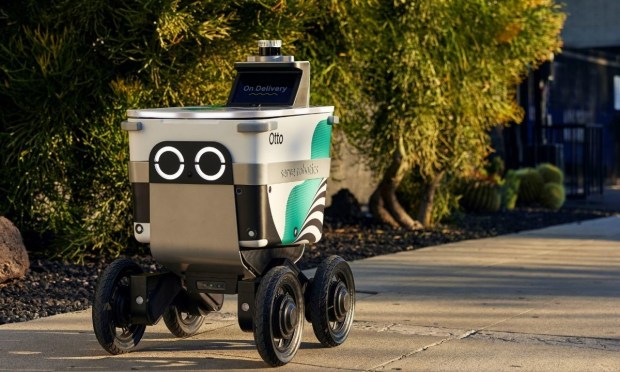Uber-Supported Serve Robotics Raises $30 Million for AI Robotic Delivery

Serve Robotics has completed a go-public transaction and raised $30 million in financing to support scaling its artificial intelligence (AI) powered robotic delivery experience.
This financing brings the company’s total capital raised up to $56 million since starting in 2021, the company said in a Thursday (Aug. 10) press release.
Existing investors such as Uber, NVIDIA and Wavemaker Partners, joined with new investors Mark Tompkins and Republic Deal Room in the financing. In addition, Uber Vice President of Delivery and Head of Americas Sarfraz Maredia joined the Serve Robotics board effective July 31.
Ali Kashani, co-founder and CEO of Serve, said in the release: “We’re thrilled that our core strategic partners Uber and NVIDIA continue to back Serve as we work to bring sustainable, autonomous delivery to every doorstep in the next five years.”
Over the past 18 months, Serve has recorded, on average, 30% month-over-month growth of its delivery volume, according to the press release.
With the new financing, the company plans to enter new markets across the U.S.; further advance its AI-powered mobility platform; and scale up its robotic fleet to meet the demand for last-mile automation, the release said.
Serve will also fulfill its commercial agreement to deploy as many as 2,000 sidewalk delivery robots with Uber Eats, per the release.
“Becoming a public company provides broader access to capital, supporting our continued growth as we ramp up our partnership with the world’s largest food delivery platform and expand other enterprise partnerships,” Kashani said in the release.
Serve also reported completing a reverse merger with Patricia Acquisition, a special purpose acquisition company (SPAC) based in Delaware. Serve becomes a wholly owned subsidiary of Patricia, which changes its name to Serve Robotics.
Noting the demand for automation of tasks that require manual labor, robotics companies are flooding into the food delivery space promising a solution, Kashani told PYMNTS in an interview posted in May 2022.
“The key is … going out there and identifying what’s noise and what’s signal,” Kashani said at the time. “Obviously, in any segment of technology, we have hype cycles where some things are overpromised and then over time, we figure out what the reality is.”
Earlier that month, Uber Eats launched robotic delivery pilot tests with both Serve and driverless vehicle technology company Motional. Both tests aimed to solve the issue of aggregators’ struggle with driver labor challenges by removing drivers entirely.

